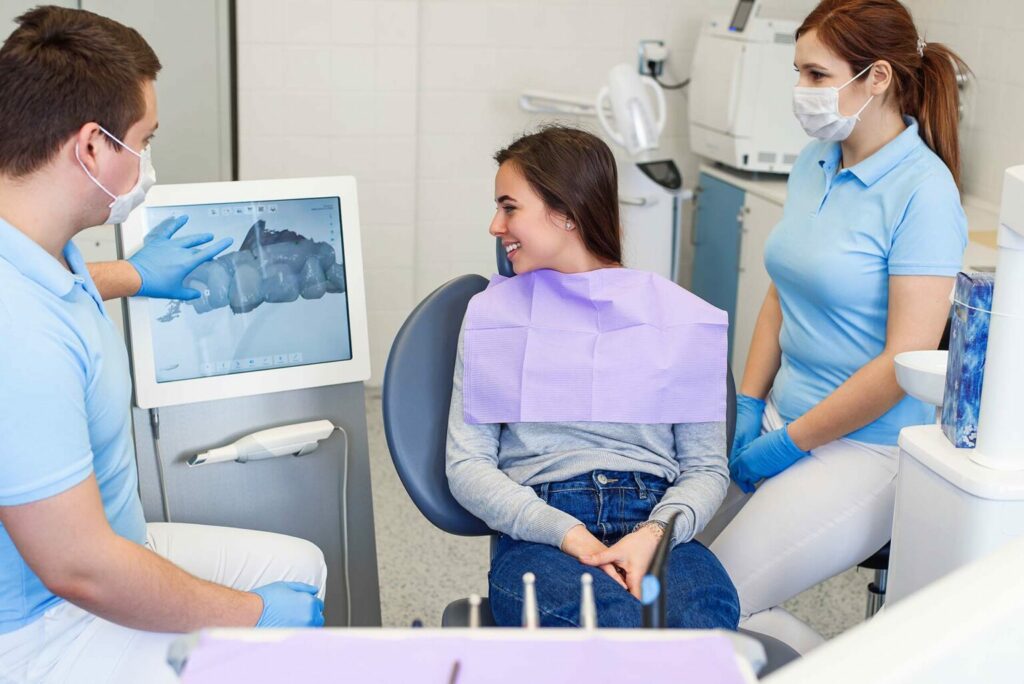The integration of 3D printing technology into orthodontic practices is revolutionizing the way treatments are planned and delivered. This cutting-edge technology has opened up new possibilities for creating customized orthodontic appliances with greater precision, efficiency, and speed.
However, while the benefits of 3D printing in orthodontics are significant, there are also challenges that practitioners must consider when incorporating this technology into their practice.
Benefits of 3D Printing in Orthodontics
Precision and Customization
One of the most significant advantages of 3D printing in orthodontics is the ability to create highly precise and customized appliances. Digital scans of a patient’s teeth can be used to produce exact replicas of dental structures, allowing for the creation of orthodontic devices that fit perfectly.
This precision leads to better treatment outcomes, as appliances like aligners, retainers, and braces are tailored to the unique needs of each patient.
Speed and Efficiency
3D printing dramatically reduces the time it takes to produce orthodontic appliances. Traditional methods of creating dental molds and appliances can be time-consuming, often requiring multiple visits and adjustments.
With 3D printing, appliances can be produced quickly and accurately, reducing the overall treatment time and allowing patients to begin their orthodontic care sooner.
Cost-Effectiveness
Although the initial investment in 3D printing technology may be high, the long-term cost savings can be substantial. By streamlining the production process and reducing the need for multiple adjustments and remakes, 3D printing can lower the overall cost of treatment.
Additionally, in-house production of appliances can reduce reliance on third-party labs, further decreasing expenses.
Improved Patient Experience
Patients benefit from the faster production of appliances, leading to shorter treatment times and fewer appointments. The ability to create more comfortable and precisely fitted devices also enhances patient satisfaction.
Moreover, the use of digital scans instead of traditional molds improves the overall experience, as patients no longer have to endure uncomfortable impression-taking procedures.
Challenges of Integrating 3D Printing into Orthodontic Practices
Initial Costs and Training
The upfront investment in 3D printing equipment and software can be significant, especially for smaller practices. Additionally, staff must be trained to use the technology effectively, which can require both time and resources.
Ensuring that the team is proficient in 3D scanning, design, and printing processes is crucial for maximizing the benefits of this technology.
Learning Curve
Incorporating 3D printing into an orthodontic practice involves a steep learning curve. Orthodontists and their teams need to familiarize themselves with new workflows, including digital scanning, CAD (computer-aided design) software, and the operation of 3D printers.
The transition from traditional methods to digital workflows may take time and require ongoing education and support.
Maintenance and Technical Issues
3D printers require regular maintenance to ensure optimal performance. Technical issues, such as printer malfunctions or software glitches, can disrupt the workflow and lead to delays in treatment.
Practices must be prepared to address these challenges by having access to technical support and maintaining backup systems to minimize downtime.
Regulatory Compliance
As with any medical device, orthodontic appliances produced with 3D printing technology must comply with regulatory standards. Practices must ensure that their 3D printing processes and materials meet the necessary safety and quality requirements.
Staying up-to-date with regulations and maintaining compliance can add complexity to the integration of 3D printing.
The incorporation of 3D printing into orthodontic practices offers numerous benefits, including improved precision, faster production, cost-effectiveness, and enhanced patient satisfaction.
However, it also presents challenges, such as the initial investment, the need for staff training, technical maintenance, and regulatory compliance. For practices willing to embrace this technology, the rewards can be substantial, positioning them at the forefront of modern orthodontic care.
By carefully weighing the benefits and challenges, orthodontists can make informed decisions about integrating 3D printing into their practices, ultimately improving patient outcomes and advancing the field of orthodontics.


